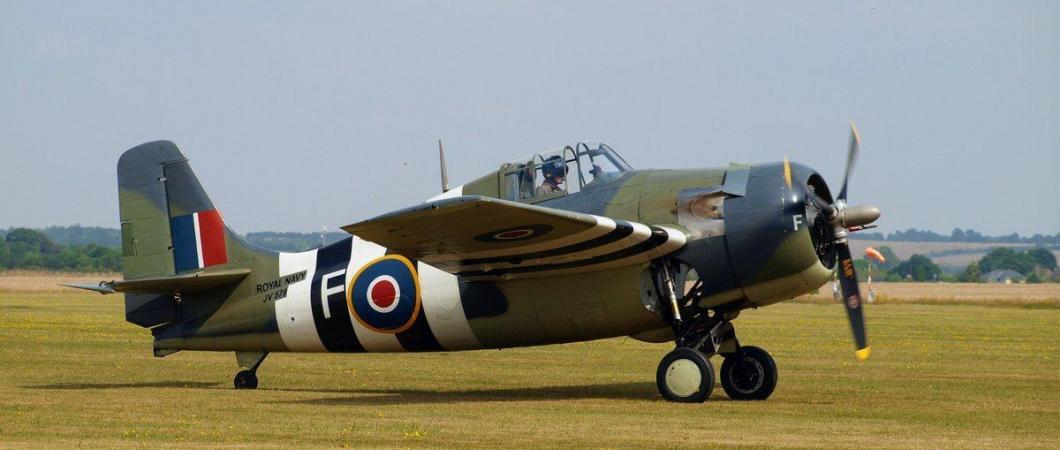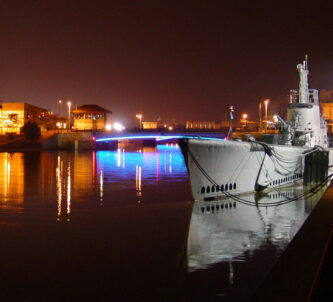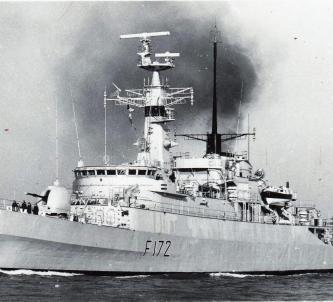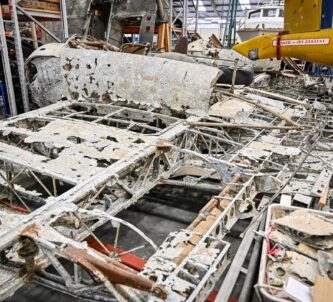The Wildcat is an amazing aircraft that filled a much needed gap in the U.S. and Allied navies’ arsenal at the start of WWII.
Descriptions of it, by pilots and historians often use words like “pugnacious”, “heroic” and “rugged”, which it certainly was, but they all recognise that the Wildcat was outclassed by its faster and more nimble adversary, the Mitsubishi A6M Zero.
Nevertheless, US Navy aviators quickly learned how to use its strengths and avoid its weaknesses.
The Wildcat, with folding wings, self-sealing fuel tanks, and armoured cockpits was heavier and slower that the lightweight Zero, which had none of those things*. The Wildcat pilots named their primary tactic “Hit & Git!” – attack and then get the hell out of there! They couldn’t out-climb, out-turn or out-pace a Zero, but they could avoid their weakness by diving & running. Their strength was literally that; the strength of their aircraft. They could take enormous damage. The Japanese ace, Saburō Sakai, described pouring hundreds of rounds into a Wildcat and being amazed that it kept flying. On the other hand, Wildcat pilots describe the way the Zeroes, made of a lightweight aluminium alloy, would disintegrate in front of them when they fired at it.
When I first saw this Wildcat, G-RUMW operated by The Fighter Collection at Duxford, I thought it had a bit of an identity crisis because although it was originally built for the US Navy and thus would be called a ‘Wildcat’, it is now painted up in Royal Navy warpaint (that of an aircraft flying from the escort carrier HMS Tracker in 1944), making it a British ‘Martlet’. However it turns out that the Royal Navy had dropped the ‘Martlet’ name by 1944 and this aircraft came off the production line in 1945.
Actually, it was a Royal Navy Martlet, not a US Navy Wildcat that got the first Wildcat ‘kill’ of the war. On Christmas Day 1940, two Martlets of 804 Naval Air Squadron, based on Orkney, shot down a German Junkers 88A that was attempting to bomb the Home Fleet at Scapa Flow.
I saw G-RUMW again recently at the Duxford Summer Airshow and was struck by the sound of its radial engine. As you can hear, it doesn’t sound anything like an inline engine like the Merlin. It’s more reminiscent of its post WWI pedigree.
The Grumman F4F Wildcat started life as a development of a biplane which they had pitched in 1935 to the US Bureau of Aeronautics who were looking for a new carrier fighter. The Bureau initially liked the biplane (it had short wings – a more efficient use of deck space), but decided they needed a modern monoplane. So Grumman came up with the Wildcat which first flew in September 1937.
Folding wings solved the space issue, and a quirky retractable undercarriage (manual**) kept her streamlined for performance.
The Wildcat filled pretty much every frontline US Navy and US Marine Corps fighter squadron at the start of America’s war, and took part in all the major battles in the early part of the war including Coral Sea and Midway, but it was superseded by the F6F Hellcat (Navy) and Vought F4U Corsair (Marines) after 1943.
Grumman switched its production lines in early 1943 to Hellcat but the Wildcat still had a useful role, particularly on smaller escort carriers and General Motors continued producing Wildcats for the U.S. Navy and Fleet Air Arm. The GM Wildcats were designated FM-1, and then a more powerful model, the FM-2.
This Wildcat, the only airworthy Wildcat in Europe, was an FM-2 built by General Motors Corporation (Eastern Aircraft Division) at Trenton, New Jersey in July 1945. It was immediately put in storage and afterwards sold. It was returned to flying condition for The Fighter Collection in 1993.
For a really detailed history of the Martlet (Wildcat) try ArmouredCarriers articles on its Development & Variants.
* At least, at first. Armour was added to later models and so were folding wing tips.
** The pilot had to manually wind the undercarriage up & down. Look for the undercarriage handle on the starboard (right) side of this Wildcat cockpit view. It took about 30 turns, at peak concentration-on-flying time, without taking the skin off your knuckles!







